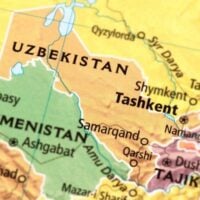Deadline: 14-Jul-23
The Environmental Protection Agency (EPA) is pleased to announce a call for applications for South Florida Program to provide competitive grants to address the immediate and emerging ecological pressures and threats to south Florida waters including fresh waters, estuaries, bays, and coral reef, central to south Florida’s economic and ecological wellbeing.
Aquatic ecosystems play a vital role supporting healthy and resilient estuaries, coastal, inland, and near-shore infrastructure by providing food, habitat, nutrient removal, water filtration, storm attenuation, carbon storage, shoreline stabilization, and other financial and tangible benefits.
This RFA solicits applications for the South Florida Program region that includes the 16-county area covered by south Florida Water Management District as well as the Florida Keys, Florida Reef Tract, Caloosahatchee Estuary, Indian River Lagoon, St. Lucie Estuary, Florida Bay, and Biscayne Bay. Please refer to the map located in Appendix D of the Notice of Funding Opportunity.
This RFA supports the Special Studies/Research component for the South Florida Program. Special Studies are projects that provide information specific to management questions and concerns, inform policy, and provide understanding of south Florida aquatic ecosystems.
Examples of eligible projects include, but are not limited to:
- supporting monitoring, research, or innovative restoration efforts for key species (e.g. coral, seagrass, sponges, mangroves, etc);
- research, investigation, and demonstration projects to mitigate harmful algal blooms;
- residential canal pollution reduction demonstration projects;
- stormwater pollution reduction demonstration projects;
- water quality and benthic habitat monitoring;
- research, investigation and management strategies to address contaminants of emerging concern such as pharmaceuticals, personal care products, and/or microplastics;
- identifying and understanding cause-effect relationships of pollutants in the environment;
- addressing specific management questions and concerns to sensitive ecosystems;
- applying innovative approaches, methods, or techniques for preventing, treating, and handling pollution from entering waterbodies; and
- investigating localized water quality impacts from potential pollution sources.
FY23 South Florida Program RFA Priorities
- Aquatic Habitat Restoration in South Florida [up to $650,000 per project]
- Addressing Climate Resiliency through Nature Based Infrastructure [up to $650,000 per project]
- Water Quality Monitoring and Modeling [up to $400,000 per project]
- Support Local Community-Based Projects to Protect Waterways and Aquatic Habitat [up to $400,000 per project]
- Florida Reef Tract Coral Health [up to $450,000 per project]
- Nutrient Management to Reduce Harmful Algal Blooms (HABs) and Sargassum [up to $500,000 per project]
- Stormwater/Nutrient Pollutant Reduction Projects [Up to $500,000 per project]
Funding Information
- Funding Amount: The total estimated funding expected under this competitive announcement is approximately $8,000,000 including both regular appropriations and IIJA funds. The funding will range from $250,000 to a maximum of $650,000 per grant award.
- Project Period: The EPA recommends project start date in the timeframe of January 1, 2024, to June 1, 2024. Proposed project and budget periods can range from two to five years for this funding announcement.
Eligibility Criteria
- In accordance with Assistance Listing Number 66.484, applications will be accepted from States, local governments, territories, Indian Tribes, and possessions of the U.S. (including the District of Columbia); public and private universities and colleges; hospitals; laboratories; public or private nonprofit institutions; and intertribal consortia.
- Non-profit organizations consistent with the definition of Nonprofit organization at 2 CFR § 200.1, the term nonprofit organization means any corporation, trust, association, cooperative, or other organization that is operated mainly for scientific, educational, service, charitable, or similar purpose in the public interest and is not organized primarily for profit; and uses net proceeds to maintain, improve, or expand the operation of the organization. The term includes tax-exempt nonprofit neighborhood and labor organizations. Note that 2 CFR 200.1 specifically excludes Institutions of Higher Education from the definition of non-profit organization because they are separately defined in the regulation.
- Nonprofit organizations that are not exempt from taxation under section 501 of the Internal Revenue Code must submit other forms of documentation of nonprofit status; such as certificates of incorporation as nonprofit under state or tribal law. Nonprofit organizations exempt from taxation under section
- 501(c)(4) of the Internal Revenue Code that lobby are not eligible for EPA funding as provided in the Lobbying Disclosure Act, 2 U.S.C. 1611.
- For-profit organizations are not an eligible entity for this funding opportunity. Additionally, non-profit organizations described in Section 501(c)(4) of the Internal Revenue Code that engage in lobbying activities as defined of the Lobbying Disclosure Act of 1995 are not eligible to apply
For more information, visit Grants.gov.









































